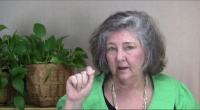Q: What is the difference between “oral motor therapy” and “non-speech oral motor exercises”? Therapy is a process comprised of techniques. Exercise is one type of technique. This topic has been discussed extensively at the Oral Motor Institute in the article “Oral Motor Treatment vs. Non-speech Oral Motor Exercises: Historical Clinical Evidence of Twenty-two Fundamental Methods.” (Volume No. 2, Monograph No. 2, 9 April 2008.)
Oral Motor Therapy vs. Non-Speech Oral Motor Exercises
By Pam Marshalla

